The aerospace business is about to change forever with the introduction of metal 3D printing technology. This method of manufacturing jet engines not only makes them work better but also faster and cheaper than ever before, which will have an enormous impact on their design as well as production. In contrast, traditional approaches take up too much time or money because they rely heavily on standard machining and casting techniques that limit what can be done; metal 3D printing lets manufacturers create more complex shapes with optimized geometries previously considered unattainable.
Here we get into details about the effect on the aerospace industry by metal 3d printed engines for airplanes. We want to give readers a complete picture by discussing technological advancements and materials used in this process along with its implications for other sectors. Additionally, we shall look at benefits ,challenges faced during integration stage s well as future prospects of using these new systems in mainstream aerospace manufacturing.We hope you join us on what promises to be one exciting journey through innovation that will change how we fly forever.
How does 3D printing technology change the aerospace industry?
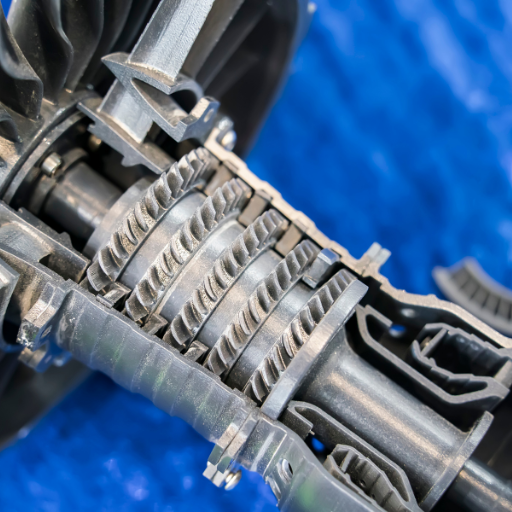
By slashing manufacturing time and costs as well as increasing design flexibility, 3D printing technology revolutionizes the aerospace industry. It allows for the creation of intricate and lightweight structures that cannot be made using conventional means – something that is key to optimizing fuel efficiency and performance in jet engines through 3D printing. Furthermore, rapid prototyping becomes possible with this method which also speeds up innovation cycles while decreasing release delays on new parts for the aerospace sector. These changes do not only improve operational efficiency but also enable production of spare components thereby enhancing supply chain resilience within aviation maintenance circles where idle times are reduced by such measures.
What are the key benefits of using 3D printing technology in aerospace?
When it comes to aerospace, the most important thing is to use 3D printing technology because it has many advantages such as flexibility in design, lower costs and time spent as well as better performance. Firstly, one of the benefits of additive manufacturing is that it enables complex shapes and lightweight structures which would otherwise be impossible with traditional methods; this leads to efficiency increases and new solutions being found. Secondly, the technology saves both money and time by optimizing production speeds through streamlining processes along with reducing waste produced during manufacturing due to its ability to only use necessary materials needed for creating an object; thus making things cheaper overall. Lastly but not least importantly parts can perform functions they could never have done before thanks solely to them being printed out rather then assembled together from multiple pieces – this means stronger lighter-weight components can be made resulting in greater fuel efficiency within engines themselves while at same time increasing overall power output.
How does 3D printing improve jet engine manufacturing?
3D printing makes changes in manufacturing jet engines by which several key ways are improved. Complex geometries and accurate lightweight strong parts can be produced, thereby improving performance and fuel efficiency. In addition, the process of additive manufacturing greatly reduces waste materials as well as cuts down on production expenses. Finally but not least important is that 3D printing enables fast prototyping with quick iteration leading to shorter development cycles while also allowing for more rapid customization and innovation in design for jet engines.
Which companies are leading in this 3D printing revolution?
Many companies have taken the lead in aerospace 3D printing. A big one is GE Additive, a branch of General Electric known for its top-of-the-line 3D printing tech and huge investments into additive manufacturing. Stratasys is also at the forefront of the industry with their strong 3D printer solutions; they’ve even made deals with important aerospace manufacturers. EOS was first to bring industrial 3D printing to life, and still today produces some of the most advanced metal 3D printers available which meet precision and performance requirements set by space agencies worldwide. These organizations are setting new standards in the aerospace industry through breakthroughs made possible by their cutting-edge 3d printer techsystems.
What materials are used in metal 3D printed jet engines?
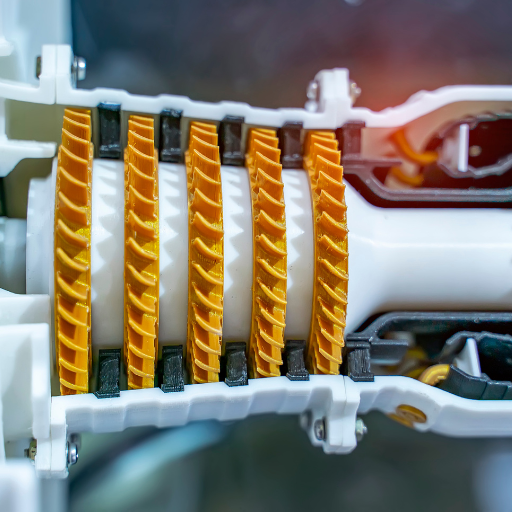
Jet engines 3D printed from metals primarily use high-performing alloys like nickel-based superalloys, titanium alloys, and aluminum alloys. They are made of superalloys that contain nickel because these can resist high temperatures and pressures which is good for anything in the turbines. Strong but lightweight ratios plus corrosion resistance are what you get with titanium alloy so it works well with different parts that need structure. When you want something that’s both light weight AND strong AND has good thermal conductivity too then choose an aluminium alloy over other options available out there.. This stuff needs to be used if one wants their aerospace applications meet standards set forth by them because these materials provide necessary performance levels while being durable enough at the same time.
Why is Inconel popular for 3D printing jet engines?
Due to its excellent mechanical characteristics and strong resistance to extreme surroundings, Inconel is commonly used for 3D publishing of aircraft engines. Mainly made up of chromium and nickel, it preserves its power as well as oxidation resistance at high temperatures therefore; ideal for elements of a turbine exposed to heat and pressure during combustion. Furthermore, this metal also displays great fatigue strength which coupled with ability withstand quick changes in temperature could enhance reliability and durability in engines hence making them last longer too. Therefore among other things that contribute towards making it last long such as improved endurance against fatigue failure together with rapid shift capability between different temp levels which promotes better service life span while ensuring lower failures rates especially within aerospace sector where precision matters most during production through addition manufacturing utilizing metals like this one called inconel which has got many useful properties for such applications too.
What other materials are used in additive manufacturing for engines?
Other materials for additive manufacturing of engines are:
- Alloys from Steel: This is because they are usually strong, tough and can be further improved by heat treatment after production. Such metals are often applied when making parts that need to resist wearing out while at the same time being able to withstand impact forces.
- Cobalt-Chrome Alloys: These types possess high strength properties as well as corrosion resistance features coupled with continuous high temperature capabilities making them suitable for parts which work under extreme conditions in an engine system.
- Ceramic Matrix Composites (CMCs): CMCs have excellent stability at elevated temperatures; they also exhibit low weight and good resistance against thermal shock which makes them ideal candidates for areas such as turbine blades or exhaust systems where these qualities are required most.
- Polymers And Their Composites: Usually non-load-bearing polymers can now be used in various applications due to the advancement of carbon fiber-reinforced plastics (CFRPs) among other polymer composites having lightweight properties and high strengths suitable for engine construction purposes.
Typically, performance characteristics shown by different materials determine their selection alongside 3D printing compatibility with technology used plus specific needs of manufactured components within an engine system.
How do these materials enhance overall engine performance?
Better engine performance is achieved through the use of materials in additive manufacturing that have high mechanical properties and reduced weight. Steel alloys, for instance, exhibit strength as well as resistance to wear ensuring critical engine parts last long without breaking down. Cobalt-chrome alloys help engines stay strong at high temperatures and corrosive environments, which is vital for components subjected to extreme operation stresses. Additionally, Ceramic Matrix Composites (CMCs) are known to show excellent stability under elevated temperatures coupled with low density thereby enhancing thermal management while reducing weight too. These improvements make engines harder wearing, more efficient and able to work at greater levels of performance together.
How does metal 3D printing (additive manufacturing) work?
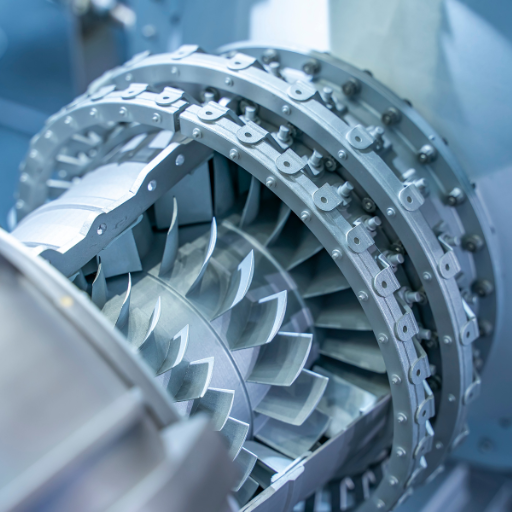
Metal 3D printing, also known as additive manufacturing, is a process that creates 3D objects by depositing layers upon layers of metal powders. Normally, it starts with a digital model of the object which is then divided into sliced horizontal sections; these sections are used as guides for the printer to construct the object from bottom to top. The common technique used is Selective Laser Melting (SLM) or Direct Metal Laser Sintering (DMLS) whereby a high powered laser selectively joins together metal powder particles according to their design. Every layer of metal powder is evenly spread over the build platform and the laser selectively melts the powder as per its design. Once one layer is finished, the build platform lowers down and another level of powder gets deposited and fused; this continues until all levels combine to form an entire item. Support structures need to be removed post processing along with heat treatment done in order achieve final desired properties and dimensions of part frequently require additional steps after completion.
What is the process of making a 3D printed jet engine part?
There are a couple of steps involved in making a jet engine part through 3D printing. Initially, the piece is designed on computer-aided design software as a digital representation. Then it gets transformed into a compatible file format for use by printers. A common method for printing is selective laser melting which uses powdered metal and layers them uniformly in thin layers before melting selectively with lasers according to the model until completion. Later on, support structures are removed from the component after heat treatment and giving it finishing touches so that required mechanical properties are achieved accurately with dimensions too. This ensures that the last thing created can be installed into place within an aircraft and used without failing under extreme conditions experienced during operation within jet engines themselves.
How does designing for additive manufacturing differ from traditional methods?
Designing for additive manufacturing (AM) is a little bit different than traditional manufacturing methods. To start with, it allows for complex geometries that are impossible under conventional techniques; this includes intricate internal structures and complicated lattice designs that lighten weight while keeping strength. Simpler geometries may have to be used in traditional methods so as to accommodate machining tools and molds most of the time. In addition, AM design optimizes material usage hence allowing minimal waste when making parts — unlike subtractive methods where extra material is cut off from larger blocks. At last but not least, AM aids in rapid prototyping and customization because digital models can easily be altered without necessarily coming up with new tooling or moulds which are usually time consuming and expensive during traditional manufacturing processes. These unique advantages associated with AM call for an alternative mindset on design that focuses on optimizing for 3D printing technologies’ layer-by-layer construction capabilities.
What role does the Israel Institute of Technology play in advancing this technology?
Technion, the Israel Institute of Technology, greatly contributes to the advancement of additive manufacturing through its state-of-the-art research and development works. Technion’s multidisciplinary tactic inspires novelty in materials science, engineering and computer science that are essential for the growth of 3D printing technologies. The school joins hands with corporate partners in coming up with new materials as well as methods used in additive manufacturing thus ensuring that there is practicality and industrial relevance to any technological improvement made. Moreover, Technion undertakings train future engineers/researchers who will form a strong labour force armed with skills necessary for pushing limits within AM (Additive Manufacturing). Such input makes this Israeli establishment instrumental towards fostering adoption/implementation around this game-changing technology.
What are the challenges of using 3D printing in jet engine production?
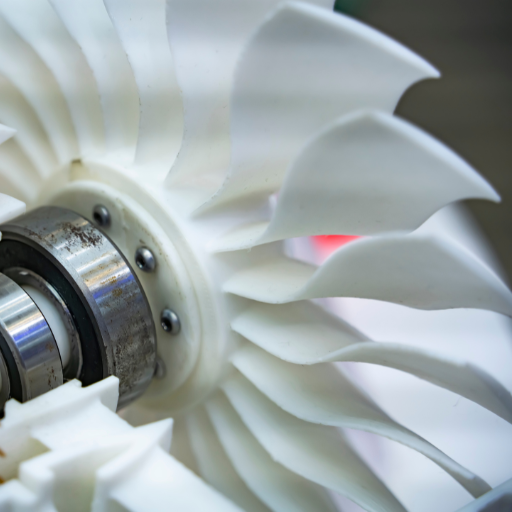
There are numerous challenges faced when using 3D printing for jet engine production. The first problem is that it is hard to make sure the material properties in 3D-printed components meet the high standards set for jet engine parts which must be able to withstand very high temperatures and stresses. Secondly, achieving required precision and consistency while producing these pieces poses a challenge because of their complex geometries. Thirdly, certification of such items is demanding since they need to pass various tests as per strict aerospace requirements.Finally, incorporating additive manufacturing into current supply chains and production lines may be expensive and time-consuming since it will involve purchasing new machines along with training staffs.
What are the technical limitations of current 3D printers for metals?
Many technical issues are faced by current metal 3D printers. For example, the post-processing of surface finish and resolution in 3D printed metal parts take time and increase cost in order to meet industrial standards. Another limitation is that construction volume of these devices is small thereby preventing them from producing big parts found in industries like aerospace or automotive sector. Thirdly, range of metals usable for 3D printing still remains limited while it takes both much effort and money to develop new metal powders meant for additive manufacturing. Moreover mechanical properties such as fatigue strength or fracture toughness achieved by traditional means can sometimes be beyond what this materials have got hence more research should be done to improve their performance based on different factors.
How does the supply chain adapt to new 3D printing technologies?
To adapt the supply chain to new three-dimensional printing technologies, there are a number of strategic changes that must be made. Initially, firms have to embrace digitalization by integrating sophisticated design and production management softwares which will enable them respond more flexibly and quickly to market needs. Secondly, supply chains should be localized further so as not rely on extensive global logistics networks which saves time and money by shortening lead times. Thirdly, inventory management becomes better optimized because of on-demand production facilitated by 3D printing that reduces waste through the elimination of large stockpiles. Lastly, partnering with technology providers is critical for keeping abreast with current developments as well providing staff training on new systems. Such adjustments put enterprises at a vantage point of harnessing efficiency gains and revolutionary potentialities inherent in 3D printing technologies.
What quality control measures are necessary for 3D printed jet engines?
To make sure that 3D printed jet engines are of good quality and dependable, strict controls must be put in place. The first step is through non-destructive testing (NDT) methods like X-ray computed tomography (CT) scanning and ultrasonic testing which can detect internal defects without causing any damage to the components. Another method is by introducing in-process monitoring systems that help keep track of printing parameters such as temperature, laser power or material deposition rates among others in real-time thereby ensuring uniformity throughout production. Thirdly, post-processing inspections are done where dimensional accuracy checks and surface finish assessments are made so as to meet aerospace requirements for tight tolerance parts. Furthermore, material validation tests like tensile strength, fatigue or thermal cycling test need to be carried out in order to ascertain whether mechanical properties of printed pieces are at par with those produced using conventional techniques. Manufacturers can guarantee performance and safety standards demanded by aviation industry for 3D printed jet engines through observing these quality control measures.
What are some examples of 3D printed parts in jet engines?
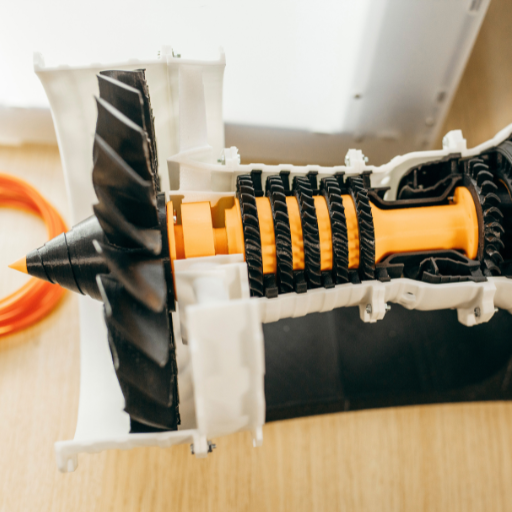
In jet engines, three-d printed parts are fuel nozzles that can have complex geometries for increasing fuel efficiency and lowering emissions. Turbine blades have also been made by this method because it can work with high-temperature alloys and create cooling channels inside them which makes their design more complicated thus improves performance. Moreover, combustion chambers as well as different brackets or mounts too are produced with the help of 3D printing technologies thereby helping in reducing weight while increasing part integration. These few instances show how much progress has been made in additive manufacturing when designing and producing components for jet engines.
How is GE utilizing 3D printing in their jet engines?
In their jet engine production processes, General Electric (GE) is currently integrating 3D printing technology. The development of the LEAP fuel nozzle using additive manufacturing is one of its remarkable accomplishments. This piece, which is necessary for fuel efficiency and emission reduction, has a complicated design that is improved by 3D printing hence resulting into a part that is 25% lighter and five times more durable than its conventionally made equivalent.
Additionally, GE uses additive manufacturing to create turbine blades from high-temperature alloys. These components have complex cooling channels that promote engine efficiency and durability thereby demonstrating the accuracy and potential of 3D printing. Moreover, GE has incorporated various engine brackets, mounts and housings among other parts into production through 3D printing which contribute towards reducing weight overall as well improving structural integrity . With these breakthroughs in place GE’s efficiency making its airplanes fly faster while at the same time conserving fuel has been greatly increased.
What is the significance of the 3D-printed fuel nozzle?
The importance of the 3D printed fuel nozzle is its revolutionary design and manufacturing, which has many advantages over traditional methods. The LEAP fuel nozzle uses an additive production technique that creates a more complex and optimized design for increasing fuel efficiency and lowering emissions. This method also makes the part 25% lighter yet five times stronger, thus reducing operational costs as well as maintenance expenses. Furthermore, this process combines twenty different pieces into one during printing thereby cutting down on assembly time while at the same time enhancing reliability. This discovery shows how 3D printing can change aerospace through producing better performing parts that are also environmentally friendly in terms of efficiency too.
What advancements have been made by companies like Safran and Beehive Industries?
Through the development of new propulsion systems and advanced manufacturing methods, Safran has brought about significant changes in the aerospace industry. One of its major achievements is the LEAP engine which was created jointly with GE and this engine involves use of such things as ceramic matrix composites amongst other advanced materials while also using 3D printing for critical components like fuel nozzles. As a result there have been improvements in terms of fuel efficiency, emissions reduction and cost cutting measures.
On the other hand Beehive Industries focuses on using modern data analytics together with digital technology advancements to optimize production processes mainly within manufacturing industries. They offer cloud based solutions that enable productivity improvement among aerospace manufacturers thereby simplifying operations as well as implementing predictive maintenance strategies. Additionally, their digital manufacturing platforms have made it possible for various aerospace components to be produced more efficiently thus reducing downtime required during production cycles. In summary, both these companies represent wider efforts being made across different sectors towards increasing efficiencies through use of cutting edge technologies in aerospace field.
Future trends and developments in metal 3D printed jet engines

Predominantly, future trends in metal 3D printed jet engines are focused on increasing performance, cutting cost and achieving more sustainability. One important advancement is using artificial intelligence and machine learning together to optimize design and manufacturing processes which will result into better parts with less errors or failures. Also, improvement is still going on in material science that could enable us use new kind of materials that have better qualities i.e., they can withstand higher temperatures without melting but at the same time weigh less than other substances having equal strength. Furthermore, it may be possible to completely change supply chains through decentralised manufacturing where items are made closer to where they will be used thus reducing transportation time and complexity of logistics required. Sustainability wise there have been attempts made towards making wastes minimal by adopting additive methods for manufacturing engines so that only what is needed gets added hence reducing negative effects on environment caused by producing these machines in large quantities. With such changes taking place continuously over time metal 3D printing must become increasingly central within aerospace industry’s tomorrow’s.
What innovations can we expect in the next decade?
In the next ten years or so, we can expect to see many new developments in metal 3D printed jet engines.
- Advanced Materials: Development and use of advanced materials will enhance the performance capabilities of 3D printed parts. For instance, ceramics matrix composites or high entropy alloys could be used to make them more heat resistant or mechanically strong; thus prolonging their service life.
- AI and Machine Learning Integration: A combination between Artificial intelligence (AI) with machine learning (ML) systems could lead us into using more advanced design optimization tools as well as predictive maintenance abilities which are able to simulate different stresses and predict failures; hence ensuring high-performance components that are also safer and reliable.
- Hybrid Manufacturing Techniques: Hybrid manufacturing methods that combine additive manufacturing with traditional subtractive techniques may be developed enabling production complex pieces having better surface finishings and tighter tolerances. By doing this we will be able to overcome some limitations associated with each process individually while at the same time pushing boundaries set forth by metal 3D printing technology itself.
These changes promise great advancements for aerospace industry in terms of performance improvement, cost reduction and sustainability enhancement.
How will 3D printing technology evolve in the aerospace sector?
The advancement of 3D printing in the field of aerospace has been found to be instrumental in revolutionizing manufacturing and design at large. Here are some current trends:
- More Output: The speed and scalability of 3D printers have been improving over time, which will help increase production rates by enabling more voluminous space parts-making within a short period. Besides, this ability to scale up easily will meet the needs of an industry that is increasingly demanding complex lightweight components.
- New Materials: Innovations will continue being made with regards to creating substances specifically designed for additive manufacturing. These materials should ideally possess lightness as well as high strength combined with resistance against extreme temperatures; hence there may be increased usage of titanium alloys and composite polymers aimed at further optimizing weight reduction vis-a-vis performance enhancement in structures used for aerospace purposes.
- Better Flexibility In Designing: By allowing objects having intricate shapes impossible or difficult under conventional techniques 3D printing still has a long way to go when it comes to enhancing aerodynamics fuel efficiency among other aspects related with systems used for air transportation—all thanks to its ability to build things layer upon layer until they attain their intended form. Therefore designers now have more freedom than ever before because they can create any shape desired knowing very well that a machine somewhere can bring such into reality.
- Cheaper Costs: It is expected that as technology advances so too shall prices fall drastically hence we should see significant savings achieved through this method while noting that waste may decrease significantly along with lead times which would mean parts being built whenever needed unlike now where warehouses must store vast amounts awaiting orders from different areas thereby reducing inventory levels greatly as well.
According to reputable sources within the industry these advancements will propel integration of AM into aviation thereby promoting innovation while giving companies an edge over their competitors
What impact will full-scale adoption have on aviation propulsion and turbojets?
The complete use of three-dimensional printing in the creation of aviation propulsion systems and turbojets will drastically change this sector with several advantages. Initially, it would allow for the production of intricate and optimized component geometries that enhance fuel efficiency through better aerodynamics while also increasing performance. What’s more, additive manufacturing supports the utilization of materials such as titanium alloys which have higher strength-to-weight ratios hence reducing overall engine mass without sacrificing durability. Moreover, rapid prototyping capabilities combined with on-demand part production can cut lead times significantly, widen customizability options as well as reduce manufacturing expenses greatly. Not only does this transformation streamline supply chains but also promotes quick growths in propelling technologies thus leading to greener power systems that are more efficient in the long run.
Frequently Asked Questions (FAQs)
Q: What makes 2023 significant in the 3d printing industry for aerospace?
A: The year 2023 marked significant advancements in the 3d printing industry, particularly with the creation of the world’s first fully 3d-printed jet engine, revolutionizing how jet propulsion systems are designed and manufactured.
Q: How does using metal 3d printing benefit the creation of jet engines?
A: Using metal 3d printing allows for the creation of complex 3d components that are lighter, more efficient, and can be produced faster than traditional methods, meeting stringent performance requirements of aerospace applications like turbine engines.
Q: Can you explain the significance of the first fully 3d-printed jet engine?
A: The first fully 3d-printed jet engine represents a breakthrough in the additive manufacturing industry. It demonstrates the capability of 3d printing equipment to produce functional, high-performance jet propulsion systems, potentially reducing costs and production times.
Q: What role does the Centre for Additive Manufacturing play in this innovation?
A: The Centre for Additive Manufacturing, including the Monash Centre for Additive Manufacturing, plays a crucial role by providing expertise, technology, and research to advance the development and application of 3d-printed jet engines, including micro turbojet engines.
Q: How does 3d-printed fuel impact the performance of jet engines?
A: 3d-printed fuel components can be optimized for better efficiency and performance, reducing the dependency on traditional manufacturing methods, and enhancing the overall functionality and reliability of 3d-printed jet engines.
Q: What was showcased at LiveWorx 2023 related to 3d-printed jet engines?
A: At LiveWorx 2023, the latest advancements in 3d-printed jet engines were showcased, highlighting the capabilities of the newest 3d printing equipment, with presentations from experts like the VP of Technology at PTC, focusing on the benefits and applications of this technology.
Q: How are companies like Boeing and Airbus involved in the engine project?
A: Boeing and Airbus are actively involved in the engine project by adopting and integrating 3d printing technologies into their manufacturing processes, aiming to produce more efficient, cost-effective turbine engine components and engine demonstrators.
Q: Why is the ability to produce complex 3d components important for turbojet engines?
A: Producing complex 3d components is crucial for turbojet engines because it allows for designs that improve efficiency, reduce weight, and meet high performance requirements, which are essential for modern aerospace engineering.
Q: What are engine demonstrators and their purpose in the context of 3d printing?
A: Engine demonstrators are prototypes built to test and validate new technologies and designs. In the context of 3d printing, they are essential in proving the viability and performance of 3d-printed jet engine components before mass production.






